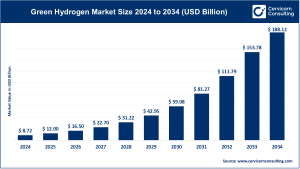Energy Storage System Market Overview
The global energy storage system market is experiencing rapid expansion, driven by accelerating clean-energy goals and the rising need for flexible, reliable power infrastructure. Industry analyses indicate that the market, valued at USD 551.15 billion in 2024, is projected to surge to nearly USD 2,115.58 billion by 2034, growing at a CAGR of 14.39% from 2025 to 2034. ESS technologies—ranging from electrochemical batteries and pumped hydro to thermal systems and flywheels—have become fundamental to modern energy networks, supporting grid stability, renewable energy integration, and improved energy security.
In 2024, Asia Pacific held a dominant 46.8% of global revenue, fueled by ambitious renewable energy targets and government-backed energy transition initiatives. North America accounted for approximately 25.1% of the market, supported by large-scale storage rollouts and grid modernization efforts. From a technology standpoint, pumped hydro storage represented 84% of total installations, while stationary ESS systems made up 79% of the market. Utilities led end-user adoption with a 66% share, underscoring their pivotal role in building flexible and renewable-ready grids.
Get a Free Sample: https://www.cervicornconsulting.com/sample/2371
Key Market Trends
1. Expansion of Utility-Scale Renewable Energy Integration
The rapid deployment of large solar and wind power installations worldwide is propelling ESS adoption. Storage has become essential for managing renewable intermittency—absorbing excess generation and releasing power as needed. Multi-gigawatt battery energy storage system (BESS) projects are now increasingly common as countries strengthen their renewable energy infrastructure.
2. Growth of Distributed Energy Resources & Microgrids
Energy systems are steadily decentralizing. Household and commercial batteries, rooftop solar-plus-storage systems, and community microgrids are gaining momentum. These setups allow users to reduce peak loads, improve energy resiliency, and adopt more efficient consumption patterns. This shift is transforming traditional grids into more distributed, flexible networks.
3. Breakthroughs in Battery Innovations
Next-generation battery technologies—such as advanced lithium-ion variants, solid-state batteries, and long-duration storage—are improving performance and reliability. Higher energy density, longer cycle life, and smarter battery management systems (BMS) are making ESS increasingly cost-effective and versatile.
4. Stronger Policy Support and Incentive Programs
Governments worldwide are introducing targeted policies, subsidies, and mandates aimed at accelerating energy storage deployment. From storage targets to tax incentives, these measures help reduce initial investment barriers and stimulate adoption across residential, commercial, and utility markets.
5. Rising Emphasis on Sustainability & Battery Recycling
With battery installations expanding globally, recycling and circular economy practices are becoming crucial. Companies are investing in technologies that reclaim critical minerals like lithium, nickel, and cobalt from used batteries, improving sustainability and strengthening supply chain resilience.
Market Drivers
Growing Renewable Energy Deployment
One of the most powerful drivers is the global push toward renewable energy. As solar and wind power increase in share, storage is required to balance grid loads, mitigate curtailment, and store surplus energy. ESS is now indispensable for achieving high renewable energy penetration.
Technological Progress & Falling Costs
Advancements in battery chemistry, manufacturing scale, and system design are lowering ESS deployment costs. Improvements in materials, production efficiency, and energy management platforms are reducing overall system costs and enabling broader adoption.
Government Incentives & Energy Transition Commitments
Many nations are adopting decarbonization goals and introducing energy storage mandates to support cleaner grid operations. Financial incentives and supportive regulatory frameworks are accelerating investments across utility, commercial, and residential sectors.
Need for Grid Modernization
Aging power grids require updated infrastructure to manage fluctuating demand and renewable integration. ESS helps provide peak-shaving benefits, frequency regulation, outage prevention, and enhanced grid stability. Advanced energy models—like virtual power plants (VPPs) and demand response programs—are increasingly relying on ESS.
Rising Capital Investments
The ESS industry is drawing substantial investment from private equity, venture capital firms, OEMs, and global energy players. Funding is flowing into battery production, recycling ventures, and large-scale storage projects, enabling rapid market expansion and technology breakthroughs.
Impact of Trends and Drivers
Technology Segments
Battery technologies—especially lithium-ion—are gaining a larger market share due to declining costs and growing renewable energy capacity. While pumped hydro still dominates overall storage capacity, modern electrochemical systems are expanding faster, especially in regions with limited natural resources for hydroelectric systems.
Regional Impact
-
Asia Pacific continues to grow due to strong renewable policies and extensive manufacturing capabilities.
-
North America is accelerating storage deployment through grid modernization initiatives and supportive incentives.
-
Europe is focusing on long-duration storage, hydrogen integration, and cross-border grid connectivity as part of its decarbonization strategy.
Applications
-
Utility-scale ESS remains the backbone of global storage growth.
-
Commercial & industrial users increasingly deploy ESS to manage energy costs and improve reliability.
-
Residential adoption is rising alongside rooftop solar and the need for energy independence.
Business Model Transformation
Innovative business models—such as storage-as-a-service and virtual power plant aggregation—are making ESS more accessible and economically viable across diverse sectors.
Challenges & Opportunities
Key Challenges
-
High initial investment for large-scale deployments
-
Regulatory inconsistencies and policy uncertainty
-
Limited raw material supply and sustainability issues
-
Technical risks associated with emerging long-duration technologies
Major Opportunities
-
Expansion of long-duration and seasonal storage
-
Growth of battery recycling and second-life markets
-
Increasing deployment of microgrids and off-grid systems
-
Innovation in hybrid renewable-storage power plants
Future Outlook
The global ESS market is positioned for exceptional long-term growth. With a projected 14.39% CAGR, the market is expected to surpass USD 2.1 trillion by 2034. Key developments likely to redefine the sector include:
-
Proliferation of long-duration and seasonal storage
-
Large-scale investment in battery recycling ecosystems
-
Widespread adoption of microgrids and distributed storage
-
AI-driven predictive analytics and smart energy management
-
Growing ESS participation in wholesale and ancillary grid services
Together, these advancements will make energy storage an essential pillar of the world’s clean energy transition, ensuring greater grid flexibility, resilience, and sustainability.
To Get Detailed Overview, Contact Us – https://www.cervicornconsulting.com/contact-us
